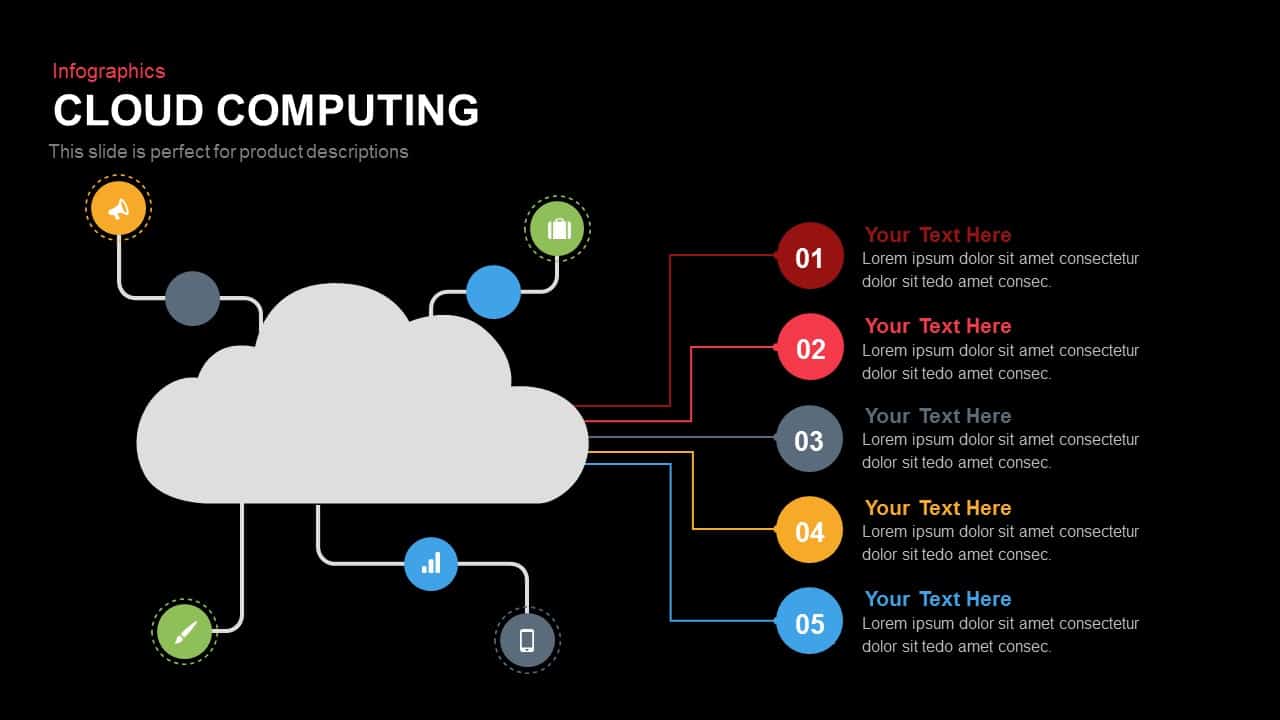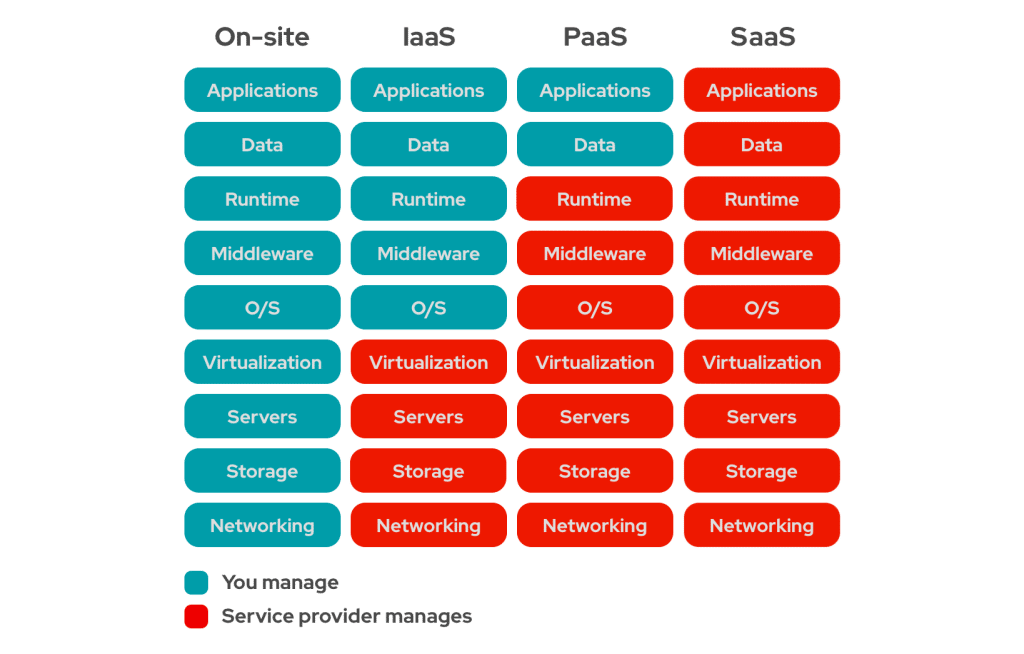In the digital era, the demand for efficient and reliable IT solutions has led to the widespread adoption of cloud computing services. From small businesses to large enterprises, cloud computing offers a plethora of benefits, including cost savings, scalability, and flexibility. Understanding the various types of cloud services, such as SaaS, PaaS, and IaaS, is essential for businesses looking to optimize their operations and streamline their workflows. With security considerations becoming increasingly crucial in today’s cyber landscape, businesses must carefully assess their cloud computing provider’s security measures to safeguard their data and operations. Moreover, staying abreast of the emerging trends in cloud computing, such as edge computing and serverless architecture, can give businesses a competitive edge in harnessing the full potential of cloud technology.

The Evolution of Cloud Computing in IT Infrastructure
Cloud computing has fundamentally transformed IT infrastructure by offering convenient access to computing resources via the internet. This paradigm shift eliminates the necessity for on-premises servers and physical hardware, leading to substantial cost savings in terms of capital expenditure and maintenance. Moreover, cloud services provide unparalleled scalability, flexibility, and reliability, allowing businesses to dynamically adjust their resources to meet fluctuating needs. This agility empowers organizations to accelerate innovation, introduce new offerings swiftly, and enhance operational efficiency, driving continuous growth and competitiveness in the digital landscape.

Exploring the Diverse Landscape of Cloud Computing Services
Infrastructure as a Service (IaaS)
IaaS empowers businesses with fundamental computing resources like servers, storage, and networking, allowing for on-demand scalability and flexibility without the hassle of managing physical hardware. This service model is ideal for organizations seeking to outsource their infrastructure needs and focus on core business operations.
Platform as a Service (PaaS)
PaaS revolutionizes software development by providing a comprehensive platform for building, deploying, and managing applications efficiently. By abstracting the infrastructure layer, developers can concentrate on coding and innovation, accelerating time-to-market and reducing operational complexities. PaaS is a game-changer for agile development environments.
Software as a Service (SaaS)
SaaS transforms the software delivery landscape by offering applications through the cloud, eliminating traditional installation and maintenance hassles. Users can access software over the internet, fostering collaboration and productivity while minimizing IT overhead. Embracing SaaS streamlines workflows and ensures access to the latest updates seamlessly.
Function as a Service (FaaS)
FaaS caters to the evolving needs of developers by enabling serverless execution of code snippets on demand. This pay-as-you-go model ensures cost-efficient resource utilization, benefiting both small startups and large enterprises. FaaS promotes agility, scalability, and rapid innovation by abstracting infrastructure headaches, making it a favored choice for modern app development.

Unleashing the Power of Cloud Computing Services: A Wealth of Benefits
Cost Savings
Cloud Computing Services pave the way for significant cost savings by eliminating the need for upfront hardware and software investments. With pay-as-you-go pricing models, businesses can effectively manage expenses, reduce maintenance costs, and reallocate budget resources more efficiently.
Scalability
Embracing Cloud Computing Services grants unparalleled scalability, enabling businesses to effortlessly adjust resources based on evolving demands. Whether scaling up to accommodate growth or down during quieter periods, the flexibility to adapt resources swiftly ensures optimal operational performance.
Flexibility
The inherent flexibility of Cloud Computing Services empowers businesses to customize solutions according to their unique requisites. With a diverse array of services and deployment options at their disposal, organizations can tailor their cloud infrastructure to align perfectly with their operational needs.
Improved Collaboration
Cloud Computing Services revolutionize collaboration by fostering seamless interactions among teams and remote workers. Through shared access to centralized data and applications, remote collaboration becomes effortless, boosting productivity and streamlining workflows across diverse work environments.

Choosing the Right Cloud Computing Provider
When selecting a cloud computing provider for your business, it’s crucial to begin by assessing your specific needs. Determine whether Software as a Service (SaaS), Platform as a Service (PaaS), or Infrastructure as a Service (IaaS) best suit your operations.
Reliability, security, scalability, and customer support are key evaluation criteria for cloud providers. Analyze their track record, security measures, ability to accommodate growth, and responsiveness to customer queries.
Pricing models, Service Level Agreements (SLAs), and data center locations play a significant role in decision-making. Compare costs, contractual terms, and data center proximity to ensure alignment with your business requirements.
To make an informed choice, conduct thorough research on potential providers. Seek recommendations, read reviews, and engage with industry experts to gain valuable insights into the provider’s reputation and performance in the market. Consulting with professionals can help you navigate the complex landscape of cloud computing services effectively.

Ensuring Robust Security Measures in Cloud Computing Services
In the realm of cloud computing services, security is paramount. While cloud providers offer robust security protocols, shared responsibility is key; businesses must reinforce with encryption, access controls, and vulnerability assessments. Adhering to industry regulations is non-negotiable to safeguard data and privacy. Routine security audits and penetration testing are vital to proactively address vulnerabilities and enhance overall security posture.
In the intricate landscape of cloud computing services, the partnership between providers and businesses forms the cornerstone of security. Cloud providers lay the foundation with stringent security measures, but organizations play an equally pivotal role in strengthening defenses. By incorporating additional layers of security, such as encryption for data protection and access controls to manage user permissions, businesses can fortify their infrastructure against potential threats and unauthorized access.
In the dynamic environment of cloud computing, staying compliant with industry regulations and standards is indispensable for data security and privacy. Adherence to frameworks like GDPR, HIPAA, or PCI DSS not only ensures legal compliance but also instills trust among customers regarding data handling practices. By aligning with these standards, businesses can uphold transparency, integrity, and accountability in their cloud operations while safeguarding sensitive information from breaches and unauthorized disclosures.
To fortify the security posture in cloud computing, proactive measures like security audits and penetration testing are indispensable. Regular evaluation of security controls through audits aids in identifying vulnerabilities or gaps in the system, allowing for timely remediation before potential threats materialize. Penetration testing goes a step further by simulating real-world attacks to test the resilience of security measures, enabling organizations to proactively enhance their defenses and mitigate risks to their cloud infrastructure.
In the dynamic landscape of cloud computing services, security considerations are paramount in safeguarding data integrity and confidentiality. While cloud providers offer robust security measures, shared responsibility necessitates businesses to complement these efforts with additional safeguards. By prioritizing encryption, access controls, compliance with regulations, and proactive security evaluations, organizations can bolster their defenses and ensure a secure cloud environment for their operations.

Emerging Trends in Cloud Computing
Serverless Computing: Revolutionizing Infrastructure Management
Serverless computing is reshaping the way applications are developed by allowing developers to concentrate solely on writing code, abstracting away infrastructure concerns. This trend eliminates the need for provisioning servers, offering a more streamlined and cost-effective approach to application deployment within Cloud Computing Services architecture.
Edge Computing: Enhancing Speed and Performance
Edge computing marks a shift in cloud architecture, enabling data processing closer to where it’s generated, cutting down latency and bolstering real-time application responsiveness. By leveraging distributed resources at the edge, Cloud Computing Services can deliver faster results and improve user experience significantly.
Artificial Intelligence Integration: Elevating Cloud Capabilities
The integration of artificial intelligence into cloud services empowers businesses with advanced functionalities like predictive analytics and machine learning. This synergy enables Cloud Computing Services to analyze vast amounts of data swiftly and derive actionable insights, fostering innovation and competitive advantages for organizations.
Quantum Computing: Pioneering Revolutionary Solutions
Quantum computing represents a groundbreaking frontier in cloud technology with unparalleled processing power that can revolutionize fields such as scientific research, drug discovery, and financial modeling. While still in its nascent stages, the potential applications of quantum computing within Cloud Computing Services present exciting prospects for the future of technology innovation.

Case Studies and Success Stories
Cloud Computing Services have revolutionized the way businesses operate, offering remarkable cost-saving opportunities. For instance, Company X managed to slash its IT expenses by 30% after migrating its operations to the cloud. This substantial decrease in costs allowed Company X to reallocate resources strategically, enhancing overall business efficiency and profitability.
Moreover, the agility and scalability of cloud computing empowered a startup, Startup Y, to swiftly bring its innovative product to market. By leveraging cloud services, Startup Y achieved rapid deployment, streamlined development processes, and quicker go-to-market strategies, setting a new benchmark for speed and efficiency in product launches within their industry.
In the realm of customer service, cloud computing plays a pivotal role in enhancing customer experiences and satisfaction levels. Businesses utilizing cloud solutions can deliver seamless, personalized services, leading to improved customer engagement and loyalty. This customer-centric approach not only boosts retention rates but also cultivates a positive brand reputation in the market.
Industry experts and leaders have widely acknowledged the transformative impact of cloud computing on businesses of all sizes. Their insights point towards cloud services revolutionizing traditional IT infrastructures, fostering innovation, optimizing resource utilization, and driving digital transformations. Embracing cloud technologies is not just a trend but a strategic move towards staying competitive and agile in today’s dynamic business landscape.
By showcasing real-world examples like Company X and Startup Y, businesses can grasp the tangible benefits and potential transformative power of cloud computing services. These success stories underscore the vital role cloud technology plays in reshaping operational efficiencies, accelerating growth, and delivering exceptional customer experiences, making it a cornerstone of modern business strategies.

